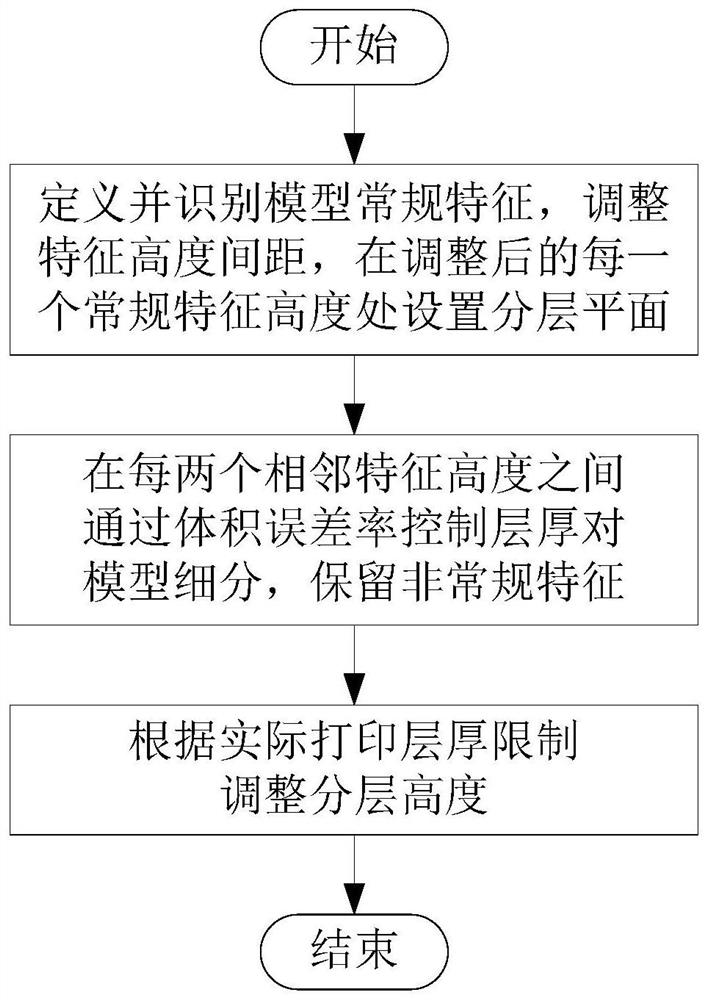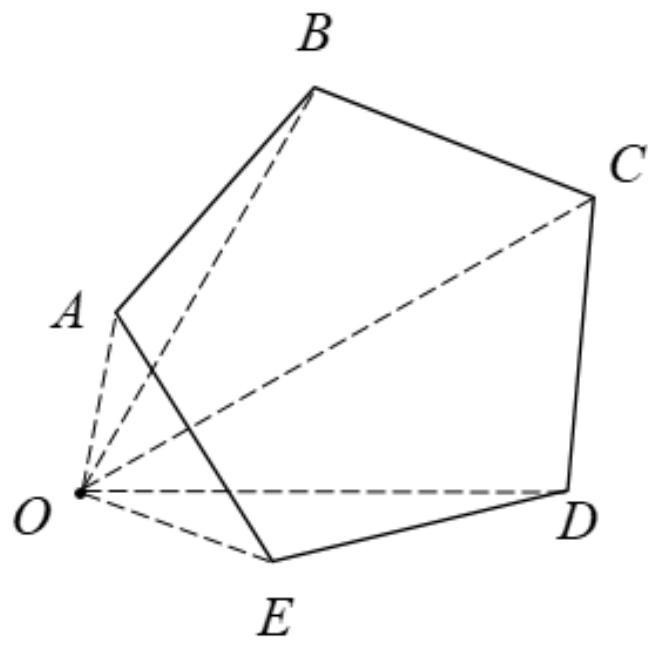3D printing self-adaptive layering method capable of reserving unconventional features of model
A 3D printing, unconventional technology, applied in the field of 3D printing adaptive layering that preserves the unconventional features of the model, and can solve the problems of dense feature loss and feature loss on the outer surface of the model
- Summary
- Abstract
- Description
- Claims
- Application Information
AI Technical Summary
Problems solved by technology
Method used
Image
Examples
Embodiment Construction
[0053] The technical solution of the present invention will be further described below in conjunction with the accompanying drawings.
[0054] Such as figure 1 As shown, a kind of 3D printing self-adaptive layering method of retaining the unconventional features of the model based on the volume error rate of the present invention comprises the following steps:
[0055] S1. Define and identify the regular features of the model, adjust the feature height spacing, and set a layered plane at each adjusted regular feature height;
[0056] Specifically include the following sub-steps:
[0057] S11. Summarize conventional features into three types: feature points, feature lines, and feature surfaces, and then identify feature points, feature lines, and feature surfaces according to the topology data;
[0058] The feature points, feature lines, and feature surfaces are defined as follows:
[0059] Feature point: the local highest or lowest point in the printing direction; this poin...
PUM
 Login to View More
Login to View More Abstract
Description
Claims
Application Information
 Login to View More
Login to View More - R&D
- Intellectual Property
- Life Sciences
- Materials
- Tech Scout
- Unparalleled Data Quality
- Higher Quality Content
- 60% Fewer Hallucinations
Browse by: Latest US Patents, China's latest patents, Technical Efficacy Thesaurus, Application Domain, Technology Topic, Popular Technical Reports.
© 2025 PatSnap. All rights reserved.Legal|Privacy policy|Modern Slavery Act Transparency Statement|Sitemap|About US| Contact US: help@patsnap.com



